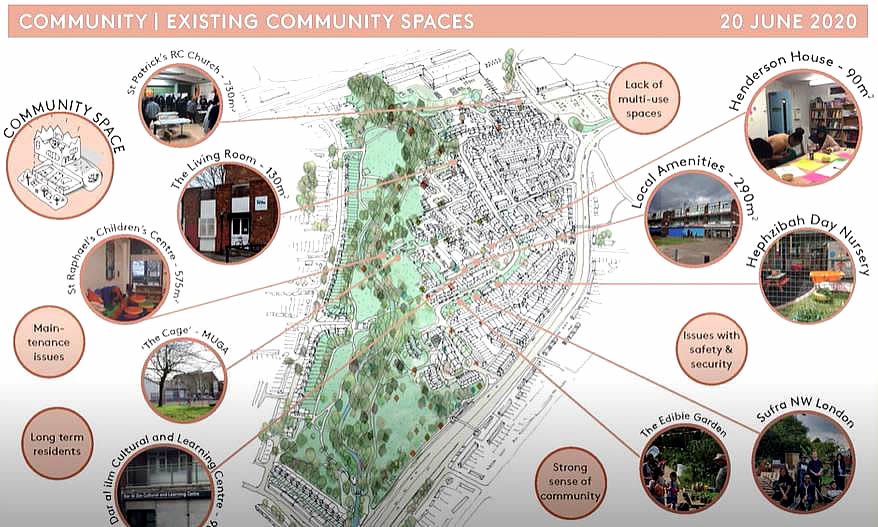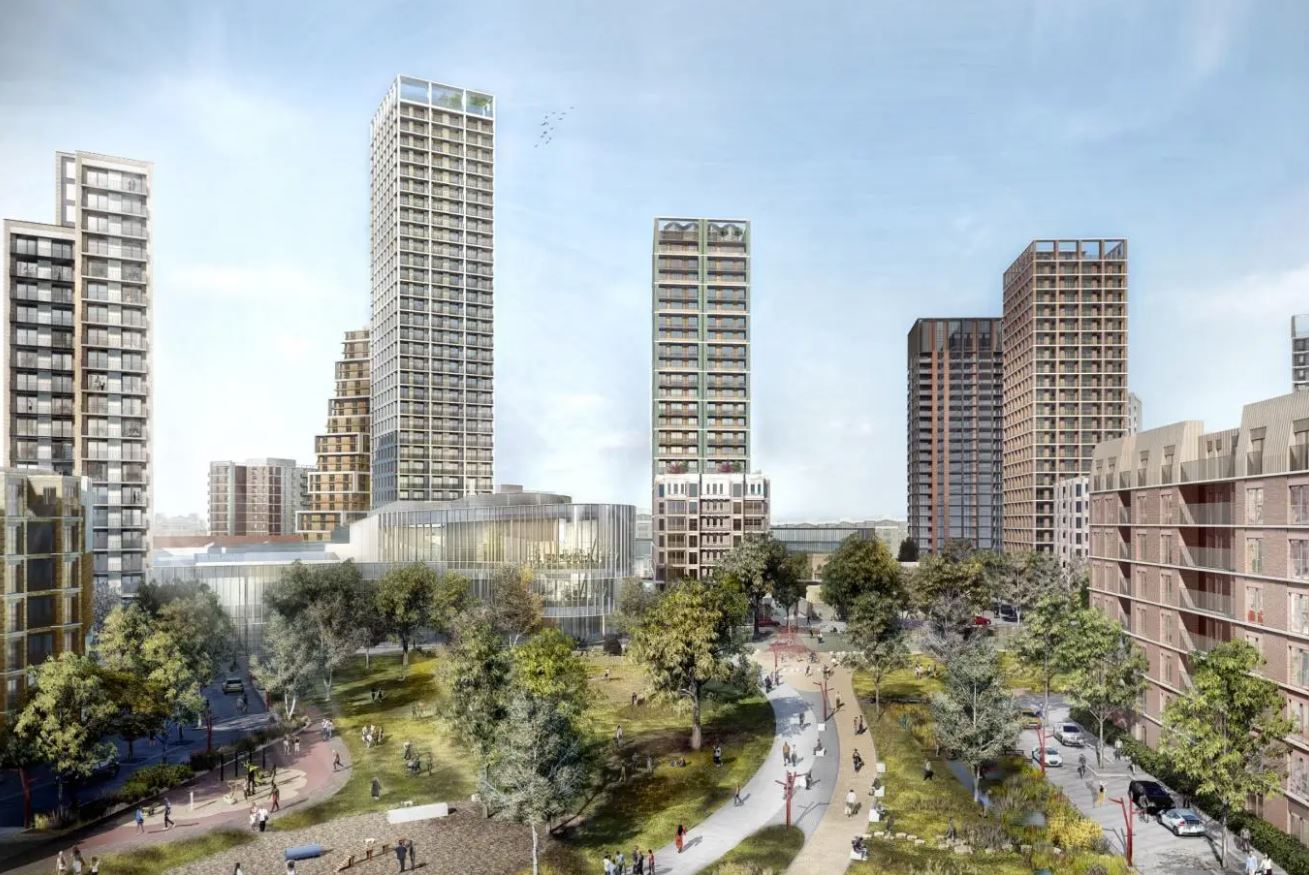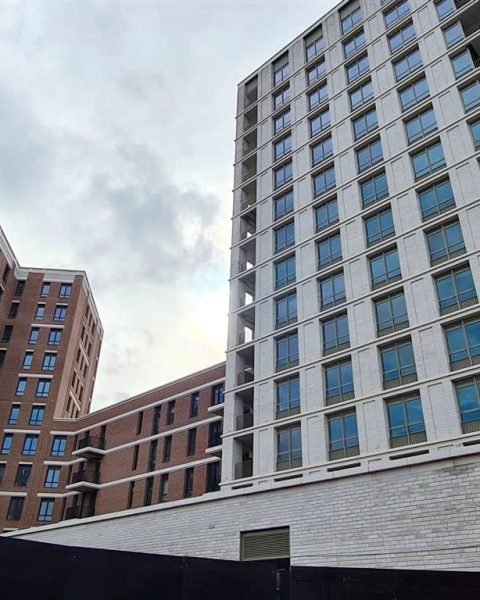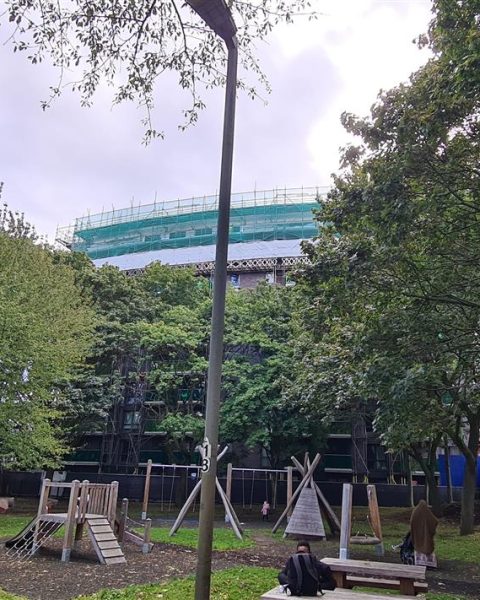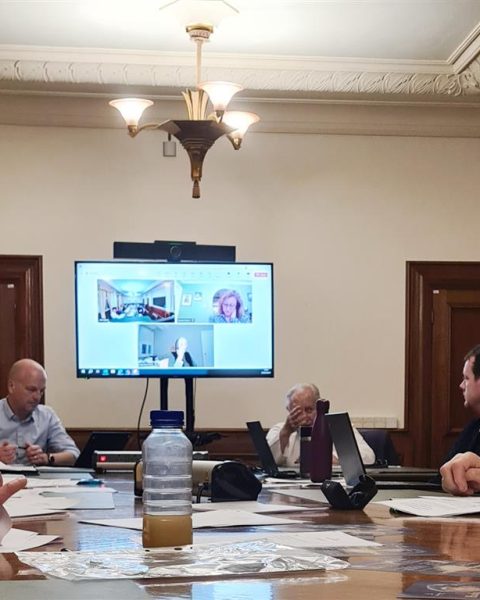‘This isn’t a ballot, it’s a fix.’ – This article is the first part of two posts on how to resist manipulative resident consultation tactics with the help of art.
Across London residents on social housing estates are being ‘consulted’ on councils’ or private developers’ plans to regenerate their estates. Whether these consultations are conducted to fulfil the statutory requirement to secure GLA funding or as part of private developers’ tick box engagement exercises, all resident consultations are supposed to follow the mayor’s Good practice guide to estate regeneration guidance.
However, the guide’s recommendation for consultations to be ‘meaningful’ and ‘transparent’ (p.12) is a far cry from the reality experienced by residents across the city.
As a result, a host of resident campaign groups across London are now protesting against their unashamedly manipulative nature including
- Focus E15 shaming Newham council’s for spending public money on ‘blatant propaganda’ to buy a YES vote at the recent Carpenter’s estate resident ballot,
- residents of the Wendling Estate in Camden accusing the council of ‘dirty tricks’ in the ballot process of their estate and
- councillors in Haringey calling for an independent inquiry into the ballot for the Love Lane estate after residents’ claimed that they had been put under “pressure” during the process and the so-called ‘community engagement was in effect a massive promotional campaign that used fairly aggressive marketing techniques’.
Staggering sums spent on promotion of estate regeneration plans
To understand quite how valuable the consultation-washing of estate regenerations decisions is to its drivers you only have to look at the staggering sums spent on them.
At the St Raphael’s estate in Brent the council spent just under 1 million pounds on private consultants, promotional videos, publications, events and exhibitions to persuade the residents to agree to the demolition of their homes.
The large budgets available to councils and developers to hire full time professional PR experts to design and publish their propaganda are arguably the main reason behind the staggering ‘success rate’ of residents voting in favour of their homes to be demolished.
So called “independent” consultants employed and paid by the developers
The mayor’s Good practice guide’s request that councils and developers should “empower” residents through “independent capacity building and advocacy support” (p.12) seems outright cynical given the fact that the ‘independent’ advisors hired for this purpose are in fact paid directly by the councils implementing the plans.
In cases like the St Raphael’s estate, the council hired ‘independent’ advisors actively withheld and obscured crucial information such as the expected increases in rent levels and changes in tenancies.
The unelected resident board put in place by the Council with the help of the so-called ‘independent’ advisers that supposedly gave voice to the residents even ejected a member after they had voiced their concerns and disagreement with the council’s consultation process and plans.
So far from empowerment, the ‘independent’ advisor’s main role seems to lie in the gathering of data proving their ‘successful’ engagement with the residents.
The residents are thus faced to fend for themselves with no budget, spaces to meet (the community facilities are typically taken away from them prior to the consultation process!) or professional skills to counter the PR machines of councils and developers.
The questionable nature of the consultation and ballot process has been critiqued in detail by Simon Elmer from the architectural practice Architects for Social Housing (ASH) in Manufacturing Consent: GLA Capital Funding Guide: Section 8. Resident Ballots for Estate Regeneration Projects as well as in publications including the article entitled Estate ballots: are they working? by Ella Jessel in the AJ in 2020 and Staying Put: An Anti-Gentrification Handbook for Council Estates in London by the London Tenants Federation, put together by Loretta Lees, Just Space and SNAG.
A real empowerment of the resident would be to provide funding for them to explore their own solutions
In his critique of the ballot process, Elmer advises residents to demand funds from “councils, housing associations, their investment partners and the Greater London Authority’ to ‘explore the refurbishment and, where appropriate, infill of their estates“. These funds would have to be equal to the budgets spent on consultations by councils and their partners to ensure the decision-making process is democratic.
In January this year, Green Party London Assembly Member Sian Berry requested for the Carpenters Estate ballot result to be voided and re-run with ‘equal access to independent campaigning resources’.
The case of St Raphs: £1m spent by developers on PR exercise to influence the consultation

To demonstrate how the manufacturing of resident consent is constructed, publicised, and paid for I will be looking at the recent resident consultation at St Raphaels Estate in Brent that took place between 2018 and 2021. What happened at St Raphs can serve as a useful case study as it follows the same template of manipulative consultation practices experienced by residents on other estates.
I was introduced to the residents’ campaign group led by Community St Raph’s by Architects for Social Housing who had been invited by the residents to advise them on a refurbishment and alternative infill option in April 2019.
Joining in ASH’s resident engagement, I was involved in producing a resident-led counter campaign through the production of posters, a protest event and several newsletters.
I also developed several art works that were informed by ASH’s research and conversations with the residents about instances of misrepresentation in the council led consultation. The art works were used as part of the residents’’ social media campaign.
Council’s budget to influence the consultation = £1m
Over the course of 3 years, until the council cancelled the ballot process because the project was no longer financially viable without the support of the GLA grant, Brent employed five companies as part of their consultation: community engagement specialists The Glass House, Your Shout, Beyond the Box, the architecture practice Karakusevic Carson architects and housing consultancy service PPCR as ‘independent’ advisors to the residents’.
Together they ran over 90 events, workshops, exhibitions, off and online meetings, held countless rounds of door knocking, published 12 newsletters and even commissioned former resident George the Poet to produce a video explaining the redevelopment options to the residents. The total cost of this PR exercise until August 2021 came to just under 1 million pounds (see presentation of estimated consultation costs by ASH).
The fact that out of this staggering budget, Brent only spent a meagre £800 (according to a series of FOI requests I placed in 2020) on ‘capacity building training’ for the members of the unelected resident board SRV, shows their disregard for any actual ‘empowerment’ of the residents.
Local community budget to fight against the flow of propaganda = 2 volunteers juggling with jobs and families
In the meantime, the residents’ campaign was manned by two main volunteers who were holding down jobs and caring for families at the same time. Not trained in PR or ‘engagement’ and with no team of helpers to speak of, they – bravely – battled the sheer manpower and expertise of the council led engagement team.
They sought the help of Architects for Social Housing who have successfully assisted resident groups resisting the demolition of their homes on other London estates including Knight’s Walk, Central Hill, West Kensington, Gibbs Green, Northwold and Patmore estates in the past.
ASH spent over two years producing a detailed report questioning some of the information given by Brent and proving that there was indeed an alternative to the two options Brent had presented the residents with.
Their report Saving St. Raphael’s Estate: The Alternative to Demolition included the fully costed design proposal to refurbish the existing homes and building infill social housing put together with the help of financial and environmental advisors and team of architects who all volunteered their time and expertise.
The tremendous dedication and colossal effort involved in this work becomes apparent when compared to KCA’s contract value of over £600k for their role in the resident engagement and production of a report with design options of similar scope.
- Read the following article: Tricks and techniques used by Councils during estate regeneration consultation
The videos included in this article are art works created by Julika Gittner. They were used on social media as part of Community St Raph’s campaign. Each of the videos uses objects to expose an aspect of the council’s misinformation (such as consultation, compensation for leaseholders or crime) as well as present the counter evidence that was generated in collaboration with ASH and the residents.


